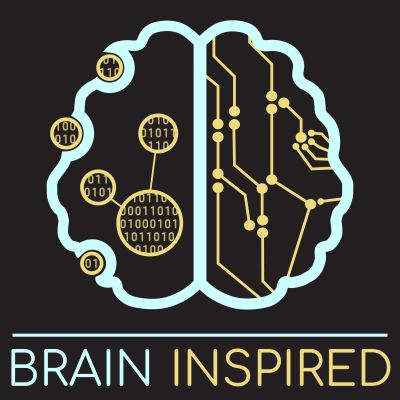Neuroscience and artificial intelligence work better together. Brain inspired is a celebration and exploration of the ideas driving our progress to understand intelligence. I interview experts about their work at the interface of neuroscience, artificial intelligence, cognitive science, philosophy, psychology, and more: the symbiosis of these overlapping fields, how they inform each other, where they differ, what the past brought us, and what the future brings. Topics include computational neuroscience, supervised machine learning, unsupervised learning, reinforcement learning, deep learning, convolutional and recurrent neural networks, decision-making science, AI agents, backpropagation, credit assignment, neuroengineering, neuromorphics, emergence, philosophy of mind, consciousness, general AI, spiking neural networks, data science, and a lot more. The podcast is not produced for a general audience. Instead, it aims to educate, challenge, inspire, and hopefully entertain those interested in learning more about neuroscience and AI.
https://braininspired.co/series/brain-inspired/
BI 091 Carsen Stringer: Understanding 40,000 Neurons
Carsen and I discuss how she uses 2-photon calcium imaging data from over 10,000 neurons to understand the information processing of such large neural population activity. We talk about the tools she makes and uses to analyze the data, and the type of high-dimensional neural activity structure they found, which seems to allow efficient and robust information processing. We also talk about how these findings may help build better deep learning networks, and Carsen's thoughts on how to improve the diversity, inclusivity, and equality in neuroscience research labs. Guest question from Matt Smith.
- Stringer Lab.
- Twitter: @computingnature.
- The papers we discuss or mention:
- High-dimensional geometry of population responses in visual cortex
- Spontaneous behaviors drive multidimensional, brain-wide population activity.
Timestamps:
0:00 - Intro 5:51 - Recording > 10k neurons 8:51 - 2-photon calcium imaging 14:56 - Balancing scientific questions and tools 21:16 - Unsupervised learning tools and rastermap 26:14 - Manifolds 32:13 - Matt Smith question 37:06 - Dimensionality of neural activity 58:51 - Future plans 1:00:30- What can AI learn from this? 1:13:26 - Diversity, inclusivity, equality
